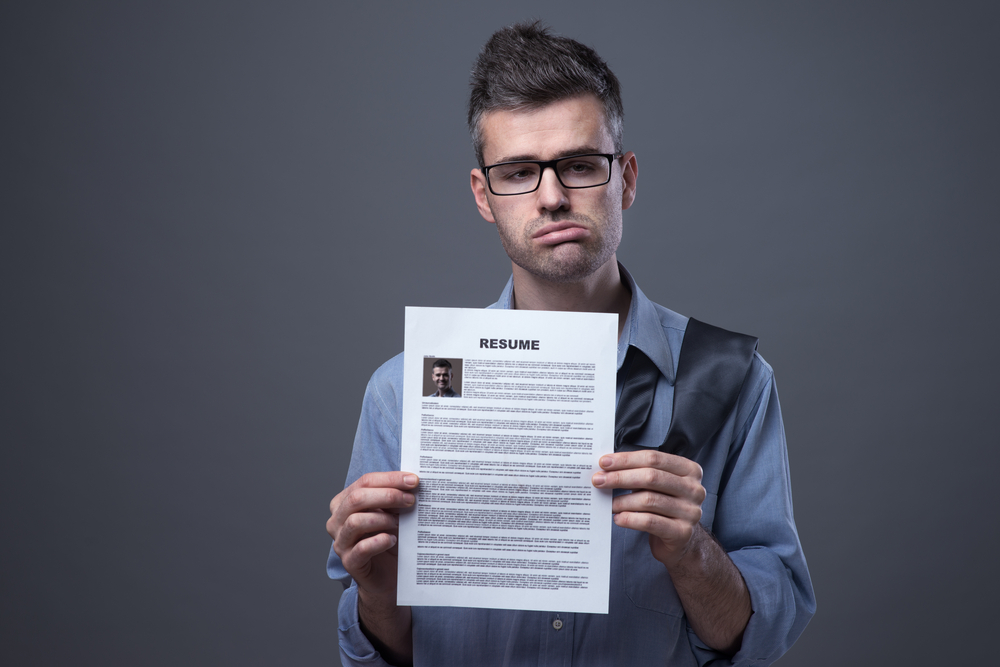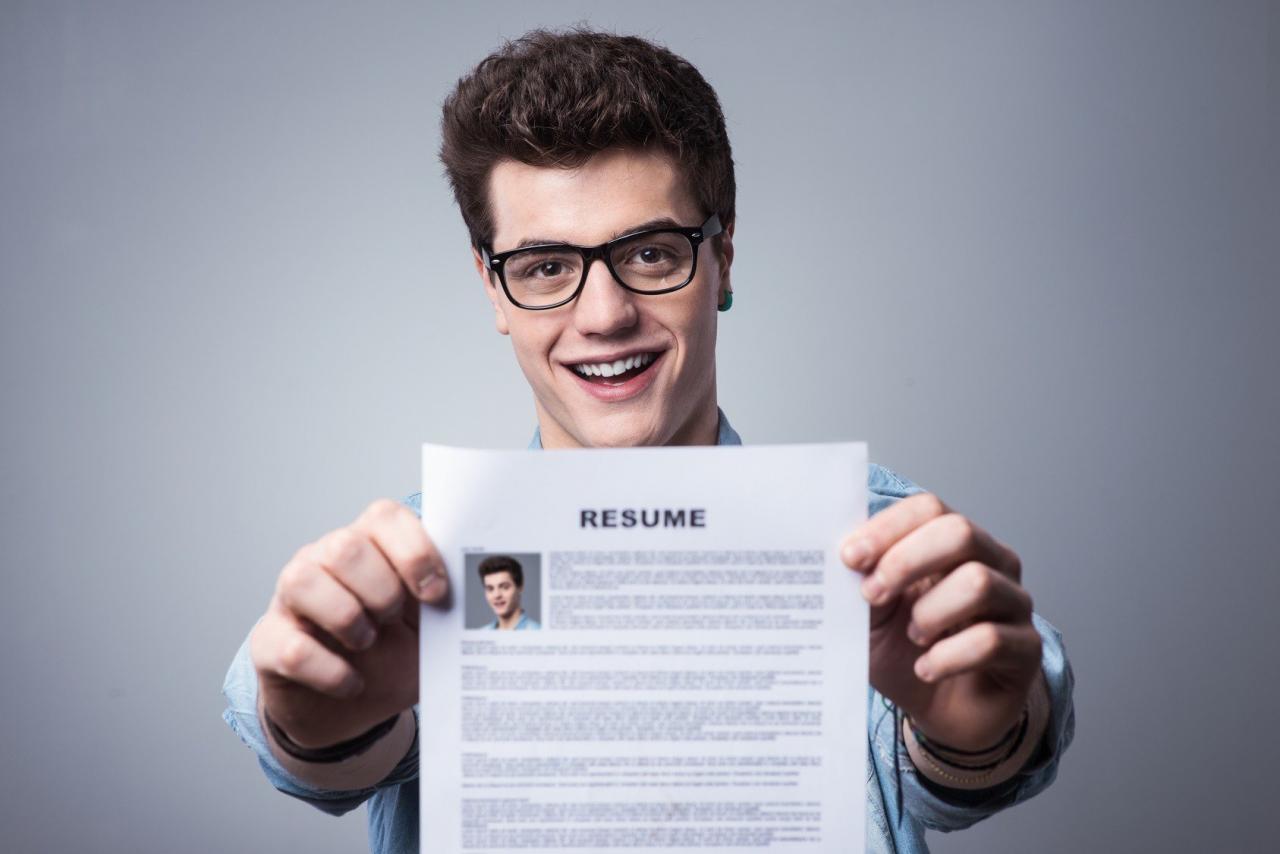Photo for CV – what should it look like and what mistakes should be avoided? The most important rules
Professional, high-quality, up-to-date, on a neutral light background – that’s what a CV should be like. Some candidates decide to do it themselves, e.g. in the form of a selfie taken with a mobile phone. But is it really a good solution? If you are looking for answers to the questions, what photos to choose on your CV, how to add photos to your CV and whether a CV with a photo is an absolute must – here you will find all the answers!
In this article you will learn:
- do you need to include a photo in your CV,
- if you are not eligible for a photo in your CV,
- which photo to choose for the CV,
- what is the best size for a CV photo,
- what mistakes to avoid when choosing a photo for my CV.
Does the CV have to include a photo?
CV with or without a photo? It shouldn’t really matter much. How you look does not determine whether or not you will be a good employee. And yet the CV photo keeps many job applicants awake at night.

Research shows that recruiters spend only 3% of their time analyzing photos on their resumes. Much more important to them are:
- experience of the candidate (58% of the time spent on analyzing the CV),
- education (9% of the time),
- skills (5% of the time).
So what is it like? Should there be a photo in the CV? The answer is no. Putting a photo in your CV is not a requirement. However, a resume and photo are an important combination if you want to add a more personal touch to your resume.
In fact, you have to answer whether you will send a CV with or without a photo. The decision is yours! You have this option, but you don’t have to use it if for some reason it is uncomfortable for you.
People involved in the recruitment process very often mistakenly believe that a resume without a photo will be negatively evaluated by the recruiter, which will reduce their chances of getting to the next stage of the interview. A CV is a complete document that shows very good competencies and professionalism. A candidate who cares about business should not attach a photo from a vacation, wedding, or party with friends to his resume.
Why should I include a photo in my CV?
A photo in the CV is not necessary, unless the employer requires it in the job advertisement. In practice, however, most CVs contain them. Good photography will catch the recruiter’s attention and help you get invited to an interview.
Thanks to a good CV photo:
- you will stand out from other candidates and be remembered
- you will make your CV more visually appealing
- you will show that you are motivated and involved in the recruitment process.
However, be aware that the provisions of the Labor Code prohibit discrimination against candidates on the basis of beauty, age, gender, ethnic origin, etc. It is the recruiter’s responsibility to evaluate your CV based on qualifications and skills. A photo in your CV is an addition that makes your application unique and thus recognizable. The graphic element makes the document look professional and aesthetic.
The photo helps the recruiter to better remember the candidate after the meeting, to identify a person with a certain experience or career. The most important thing is the professional achievements of the candidate and his adaptation to the needs and expectations of the future employer.
What should the CV photo look like?
A good CV photo is not just a photo . Making it requires commitment and rethinking the concept. If you are not doing photography yourself, you will need to spend time and resources enlisting the services of a photographer. It is worth trying to get a professional photo for recruitment to create a professional image. The photo is your calling card and an important element in building a positive first impression.
If you want a professional CV photo , here are the most important rules and elements you need to consider:
- quality – the photo in the CV should be static and clear,
- background – choose a light and neutral background for the photo (e.g. white or blue),
- clothes and hairstyle – choose formal attire in subdued colors (gray, blue, navy blue) and classic hairstyle,
- smile – a slight smile will warm your image,
- shot – choose a professional photo of the face, the photo should show only the face, not the whole figure.
The photo you are attaching to your CV must be:
- official,
- professional,
- neatly blended into the body of the document.
Avoid shots where the skin is shiny, red, etc. Framing is also important – the face, possibly face and shoulders must be visible in the photo. It is not a very good idea to include a photo of the entire body.
Your gaze should be directed towards the lens. Look as if you are looking at a recruiter viewing your CV. It’s a good idea to keep your face bright and not to show your nervousness.
What is listed here are only guidelines, recommendations and good practices. The most important thing is that the CV photo should match the position you are applying for.
If you are applying for a creative position, allow yourself to post a little less official shot. Lighting, color etc. also count. Avoid black and white photos and expressive backgrounds.
What size of CV photo should I choose?
The dimensions of the CV photo can be the same as the document photo sizes. The size of the CV photo is not as important as its high quality.
The best size for a CV photo is 3.5 by 4.5 cm. If you select too large a photo, it will dominate the document content, while too small may be blurry.
Find the golden mean in your CV photo. Compare the dimensions with the selected template or original CV. The size of the photo for your CV is also a matter of your choice – you can choose a square or rectangular photo or, if it suits the project, choose a photo inscribed in a circle.
To make your resume readable and consistent, it’s worth knowing how to add a photo to your resume. It might seem like it doesn’t matter where you put your photo on your CV, but things are a bit different.
If you are inserting a photo on your CV , there are some important points to keep in mind:
- Place the photo in a prominent place – the side on which you put the photo in your CV is important. So it’s best to find a place at the top right next to your personal data.
- Avoid frames – inserting photos into colored frames looks unprofessional and distracts the recruiter.
- Save the entire document properly – it’s safest to save your CV in PDF format. Thanks to this, you will be sure that the photo will not shift. In a document saved in DOC, the location of the photo may change depending on the version of Word, which in turn will create an impression of chaos.
- Don’t build your entire CV around the photo – the most important thing is the content of the document itself. If you want to get the employer interested in your candidacy, just try to describe your experience and competences as best as possible.
If you’re wondering how to reduce a photo to a resume , the answer is – very careful. Any manipulations with the size of the photo for the CV may end up with a pixelated and blurry image. This in turn can distort the overall visual effect.

Photo for CV – the most common mistakes
There are quite a lot of problems with deciding what photo to put on your CV! You may have noticed some of them while reading this text:
- Poor quality photo
It is a mistake to include a blurry, overexposed or too dark photo. There is nothing worse than a blurry or pixelated photo. Also, don’t take a photo yourself, and certainly don’t include a selfie in your CV.
- Far Kadr
The recruiter must clearly see the full face of the candidate in the CV photo, so avoid full body photos.
- Wrong background
Photos taken outdoors, from holidays, family gatherings or weddings should be left in a private album. In addition, photos with a patterned, dark or very bright background do not make a good impression, are distracting and often do not match the CV template.
- Second plan heroes
Only the candidate should be included in the photo on the CV. Do not include photos in the background of someone else in your CV, and do not cut other people out of the photo in computer programs – unfortunately you can see that.
- Unprofessional styling
A photo in a bikini, summer dress or sweatshirt is a bad choice. The recruiter may find you are taking the job lightly and unprofessionally. Choose subdued, comfortable and neat clothes – not necessarily a suit!
Do not attach photos to your resume that are out of focus, taken under unofficial circumstances or that show you in an unfavorable way. If you do not have a photo that meets the basic requirements of a CV photograph, better leave this element out and not include it at all.
How do I make the perfect CV photo?
A good photo that should be included in the CV shows the candidate’s face or face and shoulders – says the A photo with a tie or in a suit should be selected for the CV sent to the bank. If you apply for a creative position, you can show more ease and a smile – it still shouldn’t be a photo from your brother-in-law’s name day or a selfie from a camping trip.
What clothes to choose for the CV photo?
When preparing to take a photo for your CV, there are some general rules to consider:
- Avoid a lot of white and completely black clothes. The colors the lens likes are gray, graphite, granite or blue .
- Do not combine several fabric patterns or more than three colors.
- Select uniform clothes – no plaid, stripes or larger patterns.
- Keep jewelry to a minimum and remember that glasses are also part of it.
- Avoid unbuttoned shirt buttons or bare shoulders.
As you can see – a random photo is unlikely to work in your CV. If you want to add them to this document, please do so professionally. The photo is not decisive, but its presence will not hurt you.